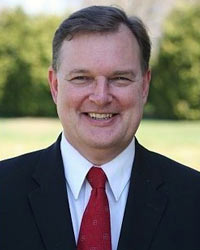Nosky, strings shine in Handel and Haydn’s Baroque fiddle hoedown

Harpsichordist Ian Watson led a program of Baroque string concertos Friday night with the Handel and Haydn Society
In what amounted to a Baroque fiddle festival, a stripped-down Handel & Haydn Society orchestra, directed at the harpsichord by Ian Watson, offered a set of concertos pivoting around the works of Vivaldi Friday evening at in the intimate confines of Jordan Hall.
Eight works in all, half by the great Italian, showcased the splendid string talents of the orchestra. Concertmaster Aisslinn Nosky, seconded superbly by Christina Day Martinson, led the way.
The wide-ranging program also featured lesser known concertos from Locatelli, Durante, and Avison, with nods to their more famous contemporaries, Scarlatti and Corelli. But all the music centered around the heightened dynamics and propulsive rhythms that make the Baroque concerto so forceful and engaging.
Two violin quartets, led respectively by Nosky and Martinson, flanked Watson at center stage. With only a pair of violas and cellos, and a single bass, the ensemble played with great exposure, as each member’s contribution (save the drowned-out Watson at the harpsichord) was clearly audible.
It was a program of adventurous, risky music, with many flawed pitches, but that was somehow inherent in the charm. Virtuosic playing like this demands stretching abilities to the limits, and this taut group of string players, enjoying every moment and ensuring the audience did as well, made music on the edge of their comfort zone all evening.
Most of the concertos—in the Baroque sense of the word, with soloists stepping out from the ensemble—were set in the standard fast-slow-fast three movements. As a difference though, Watson began with Charles Avison’s four-movement work, which opens placidly but charges into a second movement, Con fuoco, with Nosky supplying the fire. Nosky was born to play this music: she has many of the extravagant physical mannerisms of Gil Shaham, makes a bold attack when the music calls for it, and coaxes extreme dynamics not only out of her own instrument but out of her fellows as well. Infectious applause broke out after the long movement.
Cellists Guy Fishman and Sarah Freiberg were brought upstage for Vivaldi’s Concerto for Two Cellos in G Minor. The first movement was frisky-fast, and not always clearly articulated. The middle movement Largo, a duet for the soloists with harpsichord/bass continuo, had great warmth. Concerto V in A by Francesco Durante followed, of less interest than most of the evening’s music, but Vivaldi’s Concerto in B minor for Four Violins, with Abigail Karr and Susanna Ogata joining the principals, had flash in its outer movements and a slow center section, featuring a dotted figure passed all around the stage, that exuded charm.
Watson situated the harpsichord perpendicular to the audience, with no lid, which made conducting easier but so greatly reduced the sound volume that his instrument was inaudible all evening. Save for one work: a Vivaldi sonata featuring only Nosky, Fishman and Watson. Balance restored, this work had a centered quality, and Nosky soared above the trio, executing in this piece with precision and robustness combined.
Other highlights in the second half of the concert included the Andante to Vivaldi’s sinfonia Il coro delle Muse, with tutti pizzicato supporting a flashy duet by Martinson and Nosky, and the concert closing concerto grosso La Follia by Geminiani, a re-working of a popular Corelli piece, played with great emotion (such that Fishman, in the very last measure, upon releasing his bow on an upstroke inadvertently tossed it across the stage).
The program repeats 3 p.m. Sunday at Jordan Hall. handelandhaydn.org
Posted in Performances



